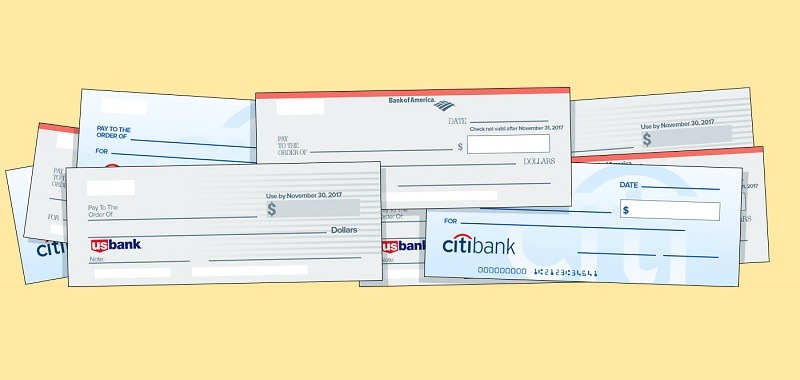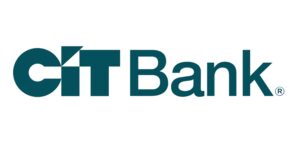
Don’t mix up these checks from regular checks! Instead of withdrawing money from your bank checking account, your bank account is offering you a chance to write a check against your credit account.
Credit card convenience checks can be mistaken for free money. Before you make this mistake, it is a good idea to learn more about this topic. Here in this post, we will be discussing the pros and cons of credit card convenience checks.
Be sure to check out HMB and see our posts on more Bank Guides as well as the best Credit card bonuses and best savings rates.
What Are Credit Card Convenience Checks
Convenience checks look and work in a similar manner as a regular check but convenience checks simply provide another channel in which you can access the credit extended by your card issuer while a regular check that takes money from your checking account.
These checks will often come with a great introductory offer. The most common one will be a zero percent interest rate which can be used towards any of a convenience check including paying off a balance on another external card account, getting a cash advance from a card issuer or making a new purchase.
Your credit card company may send you these checks every now and then. These checks have expiration dates, and you can use them to write a check for any amount up to your available credit.
However, convenience checks are not free. If you don’t understand the fees, you may pay much more than necessary for some purchases. When you write a convenience check, you basically take a cash advance against your credit card.
Therefore, the purchase is subject to a cash advance interest rate, which is typically higher than the rate on credit card purchases.
Advantages of Credit Card Convenience Checks
Can Be Used for a Balance Transfer
Convenience checks are a good option if you rack up in debt and transfer your balance from one credit card to another. By means of a balance transfer, you can usually acquire a cheaper interest rate. Fortunately, convenience checks used for a balance transfer are not subject to the cash advance interest rate.
However, there is a balance transfer fee, and many credit card companies offer an introductory rate of 0% interest for a certain number of months. Afterwards, you must pay an interest rate comparable to the rate for credit card purchases.
Can Be Used If Credit Cards Aren’t Accepted
If you are doing business with anyone who does not accept credit cards, you can use convenience checks to settle your balance if you do not have cash. However, this is an expensive way to settle any balance.
This method should be used as a last resort only. But if you must use a convenience check, you should try to avoid high finance fees by paying off the entire credit card balance.
When your credit card includes balances with different interest rates, creditors apply your minimum payment to the balance with the lowest interest rate first. Since cash advances typically feature higher rates, minimum payments aren’t applied to this balance until your regular charges are paid in full.
However, if you pay more than your minimum, creditors apply the extra money to the balance with the higher interest rate. Paying only the minimum will result in you taking a much longer time to pay off a cash advance as well as racking up high interest charges from the high cash advance interest rate.
Get Cash Quickly
If you need some cash quickly, a convenience check can put cash into your account, more than not, a lot faster than a personal loan would. All you’d have to do is write the check to yourself and deposit it into your bank account.
With this method, you’d be able to skip the often long loan application. However, a major downside to this method of using your convenience check would be the very high interest and fees you rack up.
Disadvantages of Credit Card Convenience Checks
- High Interest Rate: If you write a convenience check for anything other than a balance transfer, you’ll pay an interest rate that’s much higher than the interest rate on regular purchases.
- Possibly No Grace Period: Generally, when you make a purchase on your credit card, there is a grace period where your credit card company doesn’t charge you interest. Unfortunately, this perk doesn’t always extend to convenience checks. Your lender may start charging you interest immediately after you make your transaction.
- High Fees: Whether you use a convenience check for a cash advance or a balance transfer, you will be charged fees. Fees are typically a percentage of the check amount, with many creditors charging a minimum fee or a percentage.
- Decreases Your Available Credit and Credit Score: Because convenience checks are tied to your credit card account, writing a check for purchases decreases your available credit. If you write a check that exceeds your available credit, you’ll pay an over-limit fee. If your cash advances uses up most of your available credit, this can lower your credit score as well.
- Offers Less Protection on Purchases: The Fair Billing Credit Act offers consumers a measure of protection for purchases. Unfortunately, this protection does not extend to purchases made with convenience checks. If you receive a defective product and you made the purchase with a convenience check, it’ll depend on the retailer for a refund.
- Increases Risk of Identity Theft: Losing your convenience checks or leaving them out in the open increases the risk of identity theft. Do not leave mail in your mailbox, and if you receive convenience checks in the mail, shred the ones that you do not use. To prevent this, you can call your credit card company and request to opt out of convenience checks.
Should You Ever Use A Convenience Check?
A convenience check with a low promotional interest rate is a great tool to help pay off a balance on another credit card with a much higher interest rate. This is a great move especially if the consumer intends on paying off the entire debt during the lower-rate promotional period.
Keep in mind, that you should have a repayment strategy ready if you plan on using a convenience check. Know the terms and conditions of the check before taking advantage of it.
Here are some important questions to ask yourself when preparing to use a convenience check:
What’s the APR? The APR is the annual percentage rate and you will need to know the amount you will need to pay on your purchase, cash advance, or balance transfer.
Check to see if the convenience check you are thinking about using has a lower interest rate promotional period you can take advantage of. Also, make sure the APR won’t climb too high after the promotional period ends.
Research each check carefully because APRs can vary from check to check. Do not assume that a group of convenience checks all have the same rate. Call the issuer before using a convenience check to verify the APR.
How much is the fee? Although the introductory interest rate may be low, be sure to check the fees associated with the convenience check you decide to use. Check to see if the issuer will waive the fee during the promotional period of your check. They tend to be between 3 to 4 percent.
How will this affect my credit line? An important thing to keep in mind is how the use of a convenience check will have on your card’s credit line. What is the credit limit your issuer allows on your convenience check? You might have a lower limit than you realize, so be careful not to exceed that limit.
 |
 |
Bottom Line
If used responsibly and carefully, the risks of the convenience checks don’t seem so bad. Please do not mistake the convenience checks for regular checks! Generally, they should only be used as a last resort. Hopefully you found this post useful.
If you wish to read more, be sure to check out HMB and see our posts on more Bank Guides as well as the best Credit card bonuses and best savings rates.



